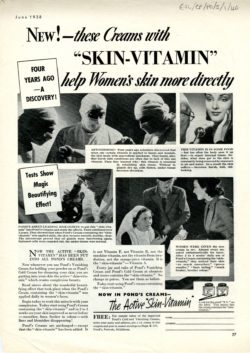About the Project
Research into ageing and society
Human beings have always worried about ageing, with special worry reserved for premature ageing. We have tried numerous different methods to try and achieve rejuvenation - a state of renewed youth or the appearance of youth. The everyday methods with which we are perhaps most familiar - skin care products, dietary and exercise regimes - have long histories but were transformed in the decades following the First World War, when a wealth of scientific research and new anti-ageing products appeared to promise the ability to prolong youthfulness, fertility and vitality.
Professor James Stark led an AHRC Fellowship - Endless Possibilities of Rejuvenation: Defying Ageing, Defining Youth in Britain, 1919-1948 - to examine how our attitudes towards ageing and rejuvenation changed in the first half of the twentieth century. Supported by postdoctoral researcher Dr Catherine Oakley and working in partnership with Boots, the Thackray Museum of Medicine and a National Trust property - Overbeck's - the Fellowship ran from October 2016 until September 2018 and uncovered the commercial, social and scientific factors associated with anti-ageing products and developed activities and resources to engage with wider audiences and showcase the fascinating heritage of rejuvenation therapies and techniques, from hormone treatments and electrotherapy devices to dietary supplements and skin creams. The project emerged from an interdisciplinary Wellcome Trust Seed Award project - Pasts, Presents and Futures of Medical Regeneration - which ran from October 2015 to September 2016.
Professor Stark's book The Cult of Youth, the first academic history of modern anti-ageing methods, was published by Cambridge University Press in March 2020. Explore the resources across multiple projects on this website, and join the conversation on Twitter. Be Rejuvenated!

